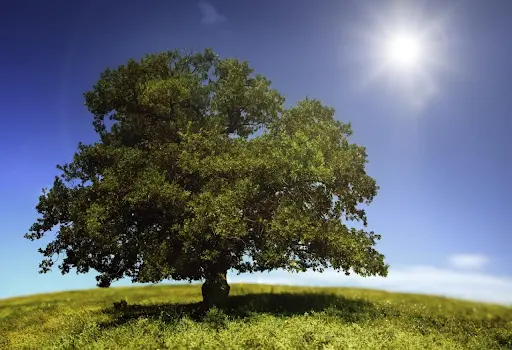Are Your Trees Suffering From Summer Heat Stress? How to Identify and Prevent It

As temperatures rise during the hot summer months, trees can face significant challenges, particularly when water becomes scarce. Ensuring your trees stay hydrated and healthy during these times is critical to preventing long-term damage. A recent study from NC State University highlighted that urban trees can often withstand increased heat and insect pests fairly well—unless they are suffering from thirst. Recognizing and addressing heat stress in trees early is key to maintaining their health and longevity.
Signs of Heat Stress in Trees
Identifying the symptoms of heat stress in trees is the first step toward ensuring their health. Here are some common signs that your trees might be suffering from summer heat stress:
- Wilting Leaves and Drooping Branches: One of the first signs of a heat stressed trees are the wilting of leaves and drooping of branches. This happens as the trees struggle to retain moisture and regulate their internal temperature.
- Irregular Yellowing of Leaves or Needles: When a tree experiences stress from high temperatures, its leaves or needles may begin to yellow prematurely.
- Leaf Drop: Trees may shed their leaves earlier than usual as a reaction to prolonged heat stress, conserving water for survival.
- Browning or Crunchy Leaves: Leaves may turn brown and become crunchy, a clear indication that the tree is not getting enough water to maintain its normal functions.
- Summer Branch Drop: One of the heat stress symptoms particularly common in oak trees, branches may suddenly drop as the tree sheds excess weight to reduce water loss.
- Early Leaf Color Change: Maples and other species may show signs of early color change as a response to stress from the heat.
Understanding the Impact of Rising Temperatures on Trees
As air temperatures climb, trees face increased challenges in dissipating heat and retaining moisture. This combination of factors can lead to a condition known as “heat stroke” in trees, where the damage to their entire root system can become irreversible if not addressed promptly.
Preventing Heat Stress in Trees
Preventative care is essential in helping your trees withstand the high heat of summer. Many of these tasks can be done by you at home, saving you from the higher costs and potential loss of your trees down the line. Here’s how you can help your trees combat summer heat stress:
1. Water Deeply and Consistently
- Hydration Is Key: Make sure your trees get enough water, especially during dry periods and when temperatures are high. Newly planted trees require extra water to establish their root systems. Use a soaker hose or garden hose to water deeply, reaching the entire root zone.
- Watering Technique: Aim to water weekly, and if possible, water out to the drip line, which extends as far out as the edge of the tree’s canopy. This ensures that water reaches the entire root system.
- Stay Hydrated: Keeping the soil around your tree’s root zone moist is critical, but avoid overwatering as this can lead to root rot.
2. Mulch to Minimize Moisture Loss
- Mulch, Mulch, Mulch: Apply a layer of mulch around your trees to help retain soil moisture and maintain a cooler temperature during the summer months. Shredded wood mulch is ideal and should be applied to a depth of 2 to 4 inches.
- Proper Mulching Practices: Keep the mulch at least 6 inches away from the tree’s trunk to prevent decay and disease problems. Mulching helps minimize moisture loss from the soil and insulates the tree’s root zone from extreme heat.
3. Avoid High Nitrogen Fertilizers
- Fertilizer Caution: Avoid using fertilizers high in nitrogen during hot and dry periods. Excessive nitrogen can overstimulate growth and burn the tree’s feeder roots, which are already stressed by the heat.
- Balanced Fertilization: Instead, consider using a balanced fertilizer like Arborplex, which can be applied at any time of the year without overstressing the tree.
4. Monitor for Signs of Recovery
- Observe Your Trees: After the extreme heat has passed, closely observe your trees to see if their leaves are perking up. If they are still showing signs of stress, such as wilting or discoloration, it may be time to consult a certified arborist.
- Proper Diagnosis: It’s not always easy to diagnose whether your tree’s symptoms are due to heat stress or another issue, like disease problems or rust-colored spots caused by pests. A certified arborist can provide a proper diagnosis and recommend appropriate tree care strategies.
The Importance of Choosing the Right Tree Species
Not all trees are equally resistant to heat stress. When planting new trees, consider selecting species that are more tolerant of high temperatures and drought conditions. This proactive approach can help ensure your landscape remains vibrant even during the hottest months.
When to Call in the Experts
If you’re unsure whether your tree is suffering from heat stress or if it’s showing other concerning symptoms, don’t hesitate to contact professionals. At Heartwood Tree Care, we’re here to help you keep your trees healthy and resilient, no matter the season. Contact our team today to learn about our line-up of professional services, including tree pruning, tree preservation, and so much more!
